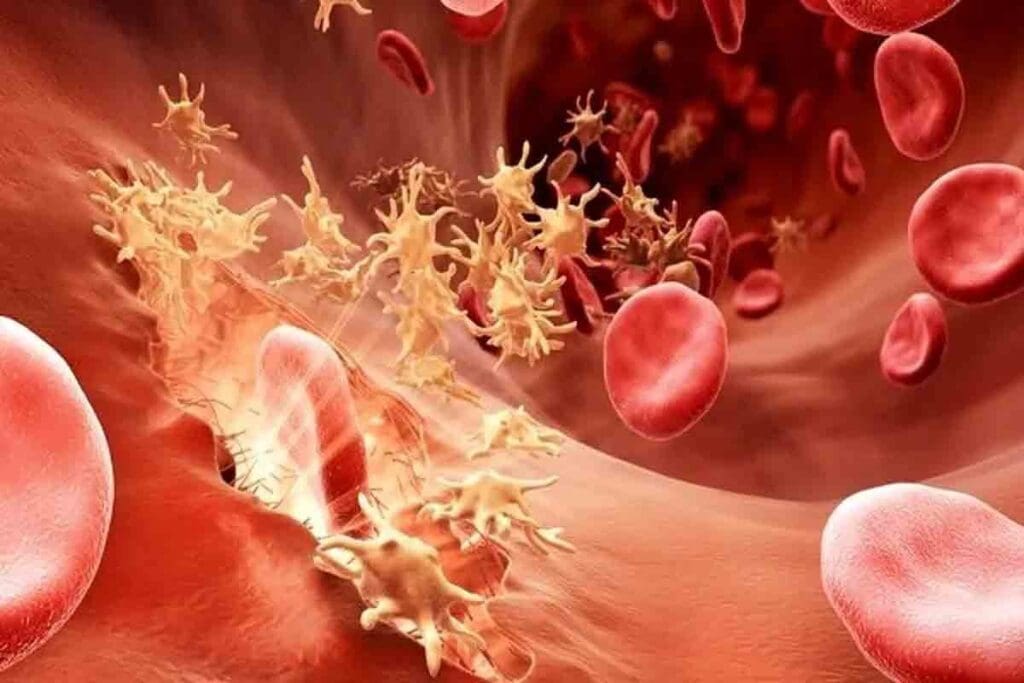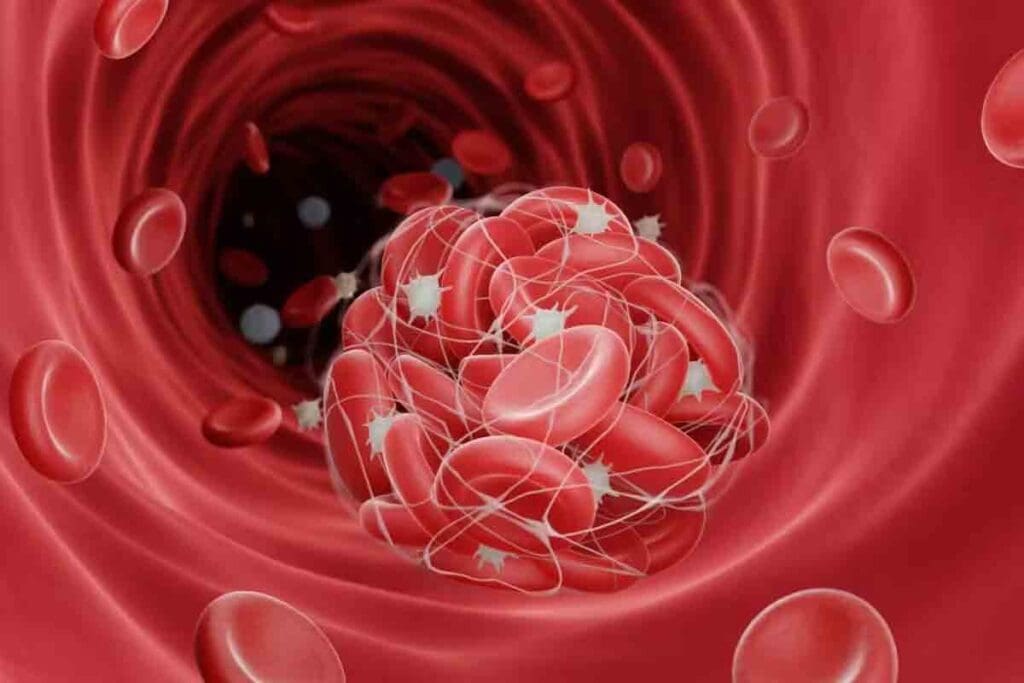Last Updated on November 17, 2025 by Ugurkan Demir

In recent years, hematology has made big strides. New therapies and treatments are now available globally. Liv Hospital is leading the way in patient-focused care for blood disorders. They are using new gene therapies and targeted treatments for diseases like sickle cell and blood cancers.
New gene therapies and targeted treatments have changed blood disease treatment. These advances are making a big difference in patient care. They are giving new hope to those dealing with these conditions.

Blood diseases have a big impact, affecting patients, their families, and communities. Conditions like sickle cell disease and beta thalassemia are major health issues globally.
Blood diseases can greatly affect a person’s life and healthcare systems. They highlight the need for better management and treatments.
Blood disorders are more common than many think. Anemia, for example, affects a large part of the world’s population, often due to iron deficiency. Sickle cell disease, another common disorder, affects millions, mainly in areas where malaria was once common.
The World Health Organization says sickle cell disease is a big public health issue in many countries. It causes abnormal hemoglobin and deformed red blood cells, leading to various health problems.
Blood diseases can make daily life hard. People with chronic conditions often feel tired, in pain, and get sick easily.
“Living with a blood disease can be incredibly challenging. It’s not just about managing the condition; it’s about maintaining a quality of life that allows you to participate fully in daily activities and enjoy time with loved ones.”
The emotional and psychological effects of blood diseases are also significant. Patients often feel anxious, depressed, and stressed, which can harm their overall well-being.
Current treatments for blood diseases have their limits. They can have serious side effects or not work for everyone.
New treatments like gene therapy and targeted therapies offer hope. They could improve how we manage blood disorders and enhance patients’ lives.
As research improves, it’s key for healthcare and policymakers to support these new treatments. This way, patients everywhere can get the latest medical help.

The field of blood disease treatment is changing fast with new gene therapies. These advances are promising, mainly for sickle cell disease and other hemoglobinopathies.
Therapies like Casgevy and Lyfgenia lead this change. They show great promise in treating severe blood disorders.
Casgevy uses CRISPR to edit genes for sickle cell disease. It aims to cure the condition by fixing the genes at the root of the problem.
Lyfgenia adds a healthy gene to treat hemoglobinopathies. It introduces a good gene into the patient’s cells.
Lyfgenia’s benefits include:
Exa-cel is a gene therapy with the promise of a one-time cure for some blood diseases. It changes the patient’s cells to make healthy blood cells.
Exa-cel’s advantages are:
In summary, gene therapies like Casgevy, Lyfgenia, and Exa-cel are changing blood disease treatment. They offer hope for severe blood disorders and could provide lasting cures.
The field of stem cell transplantation is changing fast. New methods are being found to treat blood diseases better. This means better chances for patients to get well.
Haploidentical transplants are a big step forward. They help patients who don’t have a perfect match for a transplant. This means family members can be donors, making more people eligible for transplants.
Benefits of Haploidentical Transplants include:
Reduced-intensity conditioning (RIC) is a big change. It’s less harsh than old methods. This makes transplants safer for older people or those with health issues.
Good care after a transplant is key. New ways to watch for problems and fix them have helped a lot. It’s important to keep an eye out for graft-versus-host disease, infections, and cancer coming back.
Key aspects of post-transplant care include:
As stem cell transplantation keeps getting better, these new ideas will help more patients. They offer hope and better lives for those with blood diseases.
The way we treat blood cancers is changing with new targeted therapies. These treatments aim to hit cancer cells directly. This reduces harm to healthy cells and boosts patient results.
Pemigatinib is a new therapy for rare blood cancers. It blocks proteins that help cancer grow. Immunotherapy like pemigatinib is key in fighting blood cancers.
Antibody-drug conjugates (ADCs) are making big steps in treating leukemia and lymphoma. They attach a drug to an antibody that targets cancer cells. This delivers the drug right to the cancer, protecting healthy tissues.
Tyrosine kinase inhibitors (TKIs) have changed the game for some blood cancers. They target enzymes that help cancer cells grow. Newer TKIs are more effective and safer.
| Targeted Therapy | Cancer Type | Mechanism of Action |
| Pemigatinib | Rare Myeloid/Lymphoid Neoplasms | Inhibits specific proteins contributing to cancer cell growth |
| Antibody-Drug Conjugates | Leukemia and Lymphoma | Delivers toxic drugs directly to cancer cells via targeted antibodies |
| Tyrosine Kinase Inhibitors | Various Blood Cancers | Targets enzymes involved in cancer cell proliferation |
Targeted therapies are a big leap forward in blood cancer treatment. As research keeps going, we’ll see even better treatments come along.
Hemophilia treatment has seen big changes with new clotting factors and bispecific antibodies. These new tools have made managing hemophilia and bleeding disorders easier. They give patients better and simpler ways to get treatment.
Extended half-life (EHL) clotting factors have changed how we treat hemophilia A and B. They mean patients need fewer infusions, making life easier and more enjoyable. EHL factor VIII and IX concentrates keep factor levels up for longer, cutting down on the need for frequent shots.
The arrival of EHL products is a big win for hemophilia care. They make treatment less frequent and keep factor levels steady. This helps prevent bleeding better than before.
Bispecific antibodies are a new and exciting way to treat hemophilia. Emicizumab, a bispecific antibody, is a standout. It helps reduce bleeding in patients with hemophilia A, even those with inhibitors.
Using bispecific antibodies like emicizumab opens up new ways to treat hemophilia. They can be given under the skin and might reduce the need for clotting factor concentrates. Researchers are looking into other bispecific antibodies to expand treatment options even more.
Gene therapy is a promising cure for hemophilia A and B. It aims to fix the gene problem by giving patients a working copy of the gene. Early trials show promise, with some patients making more clotting factor and fewer bleeding episodes.
Gene therapy is in its early days but could change hemophilia treatment forever. It could offer a long-term or even permanent fix. Scientists are working hard to make it safer and more effective, bringing it closer to being used in hospitals.
New treatments for beta thalassemia are changing how we manage this genetic disorder. These advances bring hope to patients around the world.
Iron buildup is a big problem for beta thalassemia patients because of blood transfusions. Next-generation iron chelation therapies aim to control iron levels better. They help lower the risk of iron-related problems and make it easier for patients to stick to treatment.
Deferasirox and deferiprone are iron chelators that work well. Scientists are working to find the best doses and reduce side effects.
Luspatercept is an erythroid maturation agent that helps reduce the need for blood transfusions. It helps red blood cells mature, tackling the disease’s root cause.
Studies show luspatercept boosts hemoglobin levels and cuts down on transfusions. It’s a big step forward in treating beta thalassemia.
Gene therapy and gene editing could be game-changers for beta thalassemia. They aim to fix the genetic issue causing the disease.
CRISPR/Cas9 gene editing might precisely fix the beta-globin gene. Early trials look promising, opening doors for more research.
The growth of these treatments shows how fast beta thalassemia treatment is advancing. As studies go on, patients will see even better treatments soon.
Cellular immunotherapies are changing how we treat blood cancer. They use the body’s immune system to fight cancer. This new approach has shown great promise in treating blood cancers, giving hope to those who have tried other treatments.
CAR T-cell therapy is a leading edge in cancer treatment. It changes a patient’s T-cells to attack cancer cells. This therapy has shown great success in treating blood cancers like diffuse large B-cell lymphoma and acute lymphoblastic leukemia.
The steps to CAR T-cell therapy are:
CAR T-cell therapy has shown high success rates in trials. Some patients have even achieved complete remission. But, it comes with risks like cytokine release syndrome and neurotoxicity.
Autologous CAR T-cell therapy is promising but complex. Allogeneic CAR T-cells, or “off-the-shelf” CAR T-cells, are being developed to solve these issues. These cells come from healthy donors and can be used on multiple patients, making treatment more accessible and affordable.
Several companies are working on allogeneic CAR T-cell therapies. Some are already in clinical trials. These therapies aim to provide a more available and affordable option for patients.
| Therapy Type | Source of Cells | Potential Advantages |
| Autologous CAR T-cell | Patient’s own cells | Personalized treatment, potentially higher efficacy |
| Allogeneic CAR T-cell | Healthy donor cells | Off-the-shelf availability, potentially lower cost |
Natural Killer (NK) cells are being explored for cancer treatment. NK cell-based therapies have several benefits. They can target cancer cells without needing to see them first and may cause graft-versus-leukemia effects without graft-versus-host disease.
Researchers are looking into different ways to use NK cells for cancer treatment. This includes:
NK cell-based immunotherapies are an exciting area of research. They have the promise to help treat various blood cancers. As we learn more about NK cells, we can expect new and innovative treatments to emerge.
Personalized medicine in hematology is changing how we treat diseases. It uses new diagnostic tools and technologies. This makes treatments more effective and safer for each patient.
Genomic profiling is key in personalized medicine for blood diseases. It looks at a patient’s genes to guide treatment. This is very helpful for blood cancers and disorders.
Table 1: Examples of Genomic Profiling in Hematology
| Condition | Genomic Marker | Targeted Therapy |
| Chronic Myeloid Leukemia (CML) | BCR-ABL fusion gene | Tyrosine kinase inhibitors (e.g., Imatinib) |
| Acute Lymphoblastic Leukemia (ALL) | Ph+ ALL (BCR-ABL1) | Tyrosine kinase inhibitors (e.g., Dasatinib) |
Biomarkers are vital for diagnosing and tracking blood diseases. Minimal Residual Disease (MRD) monitoring is key for checking treatment success. It helps predict when a disease might come back. Tools like flow cytometry and molecular diagnostics help find MRD accurately.
Artificial Intelligence (AI) is helping make treatment choices better in hematology. AI looks at lots of data, including genes and medical history. It gives personalized treatment plans.
Benefits of AI-Assisted Treatment:
New treatments are changing hematology, focusing on rare blood disorders. These advancements offer hope to patients and doctors. They help manage and treat these conditions better.
Von Willebrand disease is a common inherited bleeding disorder. New treatments include:
New strategies are tackling rare platelet disorders like Glanzmann thrombasthenia and Bernard-Soulier syndrome:
Rare hemolytic anemias, such as hereditary spherocytosis and paroxysmal nocturnal hemoglobinuria (PNH), need specific care:
These new methods are greatly improving life for those with rare blood disorders. More research is needed to keep expanding treatment options.
Treating bone marrow diseases requires a detailed approach. These diseases affect blood cell production, causing aplastic anemia and myelodysplastic syndromes. Finding the right treatment is key.
Thrombopoietin receptor agonists are a new hope for aplastic anemia. They help make more platelets, which is good for avoiding bleeding. Elthrombopag is one such drug that has shown great results in improving platelet counts and survival rates.
Hypomethylating agents are vital for treating myelodysplastic syndromes. They change the DNA of cancer cells to help them grow normally. Azacitidine and decitabine are two drugs that have shown to improve life for patients with these syndromes.
| Hypomethylating Agent | Response Rate | Survival Benefit |
| Azacitidine | 50% | Improved overall survival |
| Decitabine | 40% | Enhanced quality of life |
For complex bone marrow issues, doctors use a mix of treatments. This mix can include immunosuppressive therapy and thrombopoietin receptor agonists. The goal is to get better results. Scientists are always looking for the best combinations.
The future of treating bone marrow diseases is in personalized medicine and targeted therapies. As we learn more about these diseases, we’ll be able to create treatments that work better for each person.
The field of blood disease management is changing fast. This is thanks to new discoveries in hematology and the creation of new treatments. We’ve seen how treatments for blood disorders are getting better, more focused, and tailored to each person.
New research and treatments are on the horizon. They will help patients with blood diseases even more. Gene editing, like CRISPR, and new ways to use cells to fight disease are just starting to be explored.
Progress in hematology will also play a big role. We’ll see more targeted treatments, new ways to use stem cells, and personalized medicine. These advancements will be key in improving how we care for patients.
As scientists learn more about blood diseases, we’ll get even better treatments. The future of managing blood diseases looks bright. It promises better care and a better life for those affected.
New treatments for blood diseases include gene therapies and targeted treatments. These methods have greatly improved patient care and life quality.
Blood diseases affect millions worldwide. They cause a lot of suffering and death. This shows the need for better treatments.
Casgevy and Lyfgenia are gene therapies for blood diseases. Casgevy uses CRISPR, while Lyfgenia adds genes. They offer new ways to cure diseases.
New stem cell transplant methods have made treatments better. These include more donors, gentler treatments, and better care after transplant. This has made the treatment more accessible and effective.
Targeted therapies, like pemigatinib, attack cancer cells directly. They harm healthy cells less. This has greatly helped in treating blood cancers.
New treatments for hemophilia include gene therapy and special antibodies. These treatments aim to improve patient outcomes and quality of life.
Researchers are looking into Luspatercept and gene editing for beta thalassemia. They also explore new iron chelation therapies. These aim to better patient outcomes.
Cellular immunotherapies, like CAR T-cell therapy, use the immune system to fight cancer. This has changed blood cancer treatment for the better.
Personalized medicine in hematology tailors treatments to each patient. It uses genetic profiles and AI to make treatments more effective and safer.
New treatments are being developed for rare blood disorders. These include treatments for von Willebrand disease and rare platelet disorders. They aim to meet the unique needs of patients.
Bone marrow diseases are treated with a range of strategies. These include thrombopoietin receptor agonists and hypomethylating agents. Combination approaches are also used.
Some bone marrow diseases can be cured. Others may need ongoing treatment. Treatment success depends on the disease, patient factors, and treatment methods.
Blood disease symptoms vary but often include anemia, fatigue, and infections. They can also include bleeding or bruising. It’s important to seek medical help quickly.
Advances in treating rare blood disorders include new treatments and better diagnostic tools. These aim to improve patient outcomes and quality of life.
Subscribe to our e-newsletter to stay informed about the latest innovations in the world of health and exclusive offers!